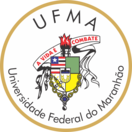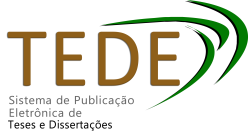| Compartilhamento |


|
Use este identificador para citar ou linkar para este item:
https://tedebc.ufma.br/jspui/handle/tede/5223Registro completo de metadados
| Campo DC | Valor | Idioma |
|---|---|---|
| dc.creator | LIMA, Ailda da Luz | - |
| dc.creator.Lattes | https://lattes.cnpq.br/1518458912526605 | por |
| dc.contributor.advisor1 | STEIMACHER, Alysson | - |
| dc.contributor.advisor1Lattes | http://lattes.cnpq.br/7599331855053094 | por |
| dc.contributor.referee1 | STEIMACHER, Alysson | - |
| dc.contributor.referee1Lattes | http://lattes.cnpq.br/7599331855053094 | por |
| dc.contributor.referee2 | MUNIZ, Robson Ferrari | - |
| dc.contributor.referee2Lattes | http://lattes.cnpq.br/2105851309690151 | por |
| dc.contributor.referee3 | BARBOZA, Marcio José | - |
| dc.contributor.referee3Lattes | http://lattes.cnpq.br/8966700125639095 | por |
| dc.date.accessioned | 2024-04-10T11:49:09Z | - |
| dc.date.issued | 2022-12-16 | - |
| dc.identifier.citation | LIMA, Ailda da Luz. Estudo da influência do BaO na bioatividade e radiopacidade de vidros borofosfatos para regeneração óssea e para aplicações em blindagem de radiação ionizante. 2022. 99 f. Dissertação (Programa de Pós-Graduação em Ciência dos Materiais/CCSST) - Universidade Federal do Maranhão, Imperatriz, 2022. | por |
| dc.identifier.uri | https://tedebc.ufma.br/jspui/handle/tede/5223 | - |
| dc.description.resumo | Neste trabalho foi investigado o efeito da substituição do P2O5 e B2O3 por BaO em vidros borofosfatos do sistema (40 − x/2)B2O3 − (25 − x/2)P2O5 − 7CaF2 − 20Na2O − 8CaO − xBaO (x=0, 5, 7,5 e 10 % em mol), nas propriedades físicas, na radiopacidade e nas propriedades bioativas desses vidros. O trabalho foi dividido em duas fases: na fase 1, as amostras foram sintetizadas pelo método de fusão/resfriamento, caracterizadas por radiografia para a escolha de qual modificador de rede seria utilizado no estudo. Na fase 2, as amostras foram sintetizadas pelo mesmo método, submetidas a teste de bioatividade em SBF por 28 dias e caracterizadas por difração de raios-x, radiografia, densidade e volume molar, espectroscopia de infravermelho por transformada de Fourier, calorimetria diferencial de varredura, blindagem de radiação ionizante e coeficiente de absorção óptico. O aumento da concentração de BaO ocasionou aumento dos valores obtidos para a densidade, redução do volume molar, não apresentou mudanças significativas nas temperaturas de transição vítrea e temperatura de cristalização com o aumento do teor de BaO. A radiografia realizada em comparação aos níveis de cinza do penetrômetro, por meio da conversão do pixel em unidades de medidas, demonstram que existem semelhanças entre a densidade de 1 mm de vidro (amostra com 0% deBaO),1mm de alumínio (mmEq/Al) e 1mm de dentina (mmEq/Al). Entretanto as amostras com 5;7,5 e 10% de BaO equivalem a 1,68; 2,29 e 2,90 mmEq/Al respectivamente, com mesma espessura. Para blindagem de radiação ionizante na região de baixa energia dos RaiosX (60KeV), a atenuação é notavelmente aumentada com o teor de BaO e atinge um valor de até 16 vezes o do concreto comum para a amostra com 10% de BaO. Os espectros de absorção óptica apresentaram uma janela de ampla transparência. As medidas de pH foram realizadas diariamente, demostraram o decréscimo do pH das soluções SBF para todas as amostras imersas. Os difratogramas das amostras antes da imersão mostraram- se amorfos e após a imersão exibiram picos de hidroxiapatita e fluorapatita. Os espectros de espectroscopia de infravermelho por transformada de Fourier, antes da imersão, indicaram alterações estruturais nos vidros com o acréscimo de BaO e após a imersão em SBF exibiram bandas de absorção nas regiões atribuídas aos fosfatos, característicos de apatita. | por |
| dc.description.abstract | In this work, the effect of replacing P2O5 and B2O3 by BaO in borophosphate glasses of the system was investigated (40 − x/2)B2O3 − (25 − x/2)P2O5 − 7CaF2 − 20Na2O − 8CaO − xBaO (x=0, 5, 7,5 e 10 mol%), in the physical properties, radiopacity and bioactive properties of these glasses. The work was divided into two phases: in phase 1, the samples were synthesized by the fusion/cooling method, characterized by radiography for the choice of which network modifier would be used in the study. In phase 2, the samples were synthesized by the same method, submitted to bioactivity test in SBF for 28 days and characterized by x-ray diffraction, radiography, density and molar volume, Fourier transform infrared spectroscopy, differential scanning calorimetry, ionizing radiation shielding and optical absorption coefficient. The increase in BaO concentration caused an increase in the values obtained for density, reduction of molar volume, no significant changes in glass transition temperatures and crystallization temperature with the increase of bao content. The radiography performed in comparison to the gray levels of the penetrometer, by converting the pixel into units of measurement, show that there are similarities between the density of 1 mm of glass (sample with 0% of BaO), 1mm of aluminum (mmEq/Al) and 1mm of dentin (mmEq/Al). However, samples with 5;7.5 and 10% BaO are equivalent to 1.68; 2.29 and 2.90 mmEq/Al, respectively, with the same thickness. For shielding ionizing radiation in the low energy region of X-rays (60KeV), attenuation is remarkably increased with the BaO content and reaches a value of up to 16 times that of common concrete for the sample with 10% BaO. The optical absorption spectra presented a window of wide transparency. The pH measurements were performed daily, deevidenced the decrease in the pH of the SBF solutions for all immersed samples. The diphrates of the samples before immersion were amorphous and after immersion showed hydroxyapatite and fluorapatite peaks. Fourier transform infrared spectroscopy spectroscopy, before immersion, indicated structural changes in the glasses with the addition of BaO and after immersion in SBF exhibited absorption bands in the regions attributed to phosphates, characteristic of apatite. | eng |
| dc.description.provenance | Submitted by Jonathan Sousa de Almeida (jonathan.sousa@ufma.br) on 2024-04-10T11:49:09Z No. of bitstreams: 1 AILDADALUZLIMA.pdf: 3185263 bytes, checksum: 16a2b43ec1e27788dcd5a14ba9c5c486 (MD5) | eng |
| dc.description.provenance | Made available in DSpace on 2024-04-10T11:49:09Z (GMT). No. of bitstreams: 1 AILDADALUZLIMA.pdf: 3185263 bytes, checksum: 16a2b43ec1e27788dcd5a14ba9c5c486 (MD5) Previous issue date: 2022-12-16 | eng |
| dc.description.sponsorship | CAPES | por |
| dc.format | application/pdf | * |
| dc.language | por | por |
| dc.publisher | Universidade Federal do Maranhão | por |
| dc.publisher.department | COORDENACAO DO CURSO DE LICENCIATURAS EM CIENCIAS NATURAIS IMPERATRIZ/CCSST | por |
| dc.publisher.country | Brasil | por |
| dc.publisher.initials | UFMA | por |
| dc.publisher.program | PROGRAMA DE PÓS-GRADUAÇÃO EM CIÊNCIA DOS MATERIAIS/CCSST | por |
| dc.rights | Acesso Aberto | por |
| dc.subject | Bioatividade; | por |
| dc.subject | Vidros Borofosfatos; | por |
| dc.subject | Radiopacidade; | por |
| dc.subject | Blindagem de radiação ionizante; | por |
| dc.subject | Apatitas. | por |
| dc.subject | Bioactivity; | eng |
| dc.subject | bioactive borophosphate glass; | eng |
| dc.subject | radiopacity; | eng |
| dc.subject | shielding from ionizing radiation; | eng |
| dc.subject | apatites. | eng |
| dc.subject.cnpq | Ciências Exatas e da Terra | por |
| dc.title | Estudo da influência do BaO na bioatividade e radiopacidade de vidros borofosfatos para regeneração óssea e para aplicações em blindagem de radiação ionizante | por |
| dc.title.alternative | Study of the influence of BaO on the bioactivity and radiopacity of borophosphate glasses for bone regeneration and ionizing radiation shielding applications | eng |
| dc.type | Dissertação | por |
| Aparece nas coleções: | DISSERTAÇÃO DE MESTRADO - PROGRAMA DE PÓS-GRADUAÇÃO EM CIÊNCIA DOS MATERIAIS/CCSST | |
Arquivos associados a este item:
| Arquivo | Descrição | Tamanho | Formato | |
|---|---|---|---|---|
| AILDADALUZLIMA.pdf | Dissertação de Mestrado | 3,11 MB | Adobe PDF | Baixar/Abrir Pré-Visualizar |
Os itens no repositório estão protegidos por copyright, com todos os direitos reservados, salvo quando é indicado o contrário.




